Gorenje K 336 2 HY HARMONY Handleiding
Bekijk gratis de handleiding van Gorenje K 336 2 HY HARMONY (8 pagina’s), behorend tot de categorie Koelkast. Deze gids werd als nuttig beoordeeld door 5 mensen en kreeg gemiddeld 5.0 sterren uit 3 reviews. Heb je een vraag over Gorenje K 336 2 HY HARMONY of wil je andere gebruikers van dit product iets vragen? Stel een vraag
Pagina 1/8

Instructions for Use
12
Upright Refrigerator - Freezer GB
Thank you for your trust and for buying this appliance.
We hope it will successfully serve the purpose for many years.
Upright Refrigerator - Freezer is a houshold appliance and it
consists of the refrigerator (the upper part) and freezer (the
lower part).
Refrigerator is for domestic use only and is used for storing
fresh foods at the temperature of 0°C and higher.
Freezer is for domestic use and is used for freezing fresh
foods and storing frozen foods (up to one year, depending on
the kind of food you store).
Before Putting Into Use................................................ 12
Instructions for Use
We Care for the Environment
Tips for Energy Savings
Important ...................................................................... 13
Storing Time During Power Supply Interruption
Disposing of the Worn Out Appliance
Placing and Installation ............................................... 13
Choosing the Right Place
Placing the Appliance
Connection to Power Supply
Description of the Appliance ....................................... 14
Refrigerator (A)
Freezer (B)
REFRIGERATOR........................................................ 15
Freezer (B)
Temperature Selection
Use.................................................................................. 15
Storing Fresh Foods
FREEZER......................................................................16
Operation Control
Control panel
ON/OFF Switch (1)
Operation Mode Selection Switch (2)
Sound alarm button, red light (3)
Temperature Selection (4)
External Temperature Meter
Use ..................................................................................16
Freezing Fresh Foods
Storing Frozen Foods
Defrosting of Frozen Food
Changing the Direction of Opening the Door .............17
Maintenance and Cleaning...........................................18
Automatic Defrosting of the Refrigerator
Freezer Defrosting
Cleaning the Appliance
Switch Off the Appliance When Not In Use
Trouble-Shooting Guide ...............................................18
Refrigerator
Freezer
Before Putting Into Use
• Before connecting the appliance to the mains supply, leave it
stand for about 2 hours, which will reduce a possibility of
malfunctions in the cooling system due to transport handling.
• Clean the appliance, and be thorough, especially in the
interior (See Cleaning and Maintenance).
• In case the interior accessories are not correctly placed,
rearrange them as described in chapter Description of the
Appliance.
Instructions for Use
These instructions for use are intended for the user. They
describe the appliance and its correct and safe use. They were
prepared for various types/models of appliances therefore you
may find in it description of some functions and accesories that
your appliance does not have.
We Care for the Environment
• Our products use environmentally friendly packaging, which
can be either recycled or disposed of in an environmentally
friendly manner. To this end, individual packaging materials
are clearly marked.
• These instructions are printed either on recycled paper or
chlorine free bleached paper.
• When your appliance finally wears out, please try not to
burden the environment with it; call your nearest authorised
service agent. (See Disposing of the Worn Out Appliance)
Tips for Energy Savings
• This is especially important if you have an upright model.
• Every now and then check if the appliance is sufficiently
ventilated (adequate air circulation behind the appliance).
• Set thermostat to lower settings as soon as possible
(depends on the amount of food loaded, ambient
temperature etc).
• Never use continuous operation unless unnecessarily
required; switch the operation mode selection switch to the
setting for automatic operation as soon as possible.
• Before loading the appliance with packages of fresh foods,
make sure they are cooled to ambient temperature.
• Ice and frost layer increase energy consumption, so do
clean the appliance as soon as the layer is 3-5 mm thick.
• If the gasket is damaged or if it turns out that the sealing is
poor, the energy consumption is substantially higher. To
restore efficiency, replace the gasket.
• The condenser on the rear wall should be always clean, free
of dust or any impurities.
• Always consider instructions stated in sections Positioning
and Energy Saving Tips, otherwise the energy consumption
is substantially higher.

Instructions for Use 13
Important
• If you have bought this appliance to replace an old one
equipped with a lock that cannot be opened from inside
(lock, bolt), make sure that the lock is broken. This will make
it impossible for children to lock themselves inside the
appliance and suffocate.
• The appliance must be correctly connected to the mains
supply. (see: Connecting to the Mains Supply).
• If the food has strange smell or color, throw it away, because it
is very likely that it is spoiled and therefore dangerous to eat.
• Disconnect the appliance from the power supply before
repairing it (only a qualified technician should repair it),
before cleaning and before replacing the light bulb.
• Do not defrost the appliance with other electric devices (hair
dryer etc.) and never scrape the ice or frost layer with sharp
tools. Use only enclosed tools or tools recommended by the
manufacturer.
• For the sake of environment protection - be careful not to
damage the rear wall of the appliance (the condenser unit or
the tubes - for example when moving the appliance) or any
part of the refrigerating system inside the appliance.
• The refrigerating system of the appliance is filled with
refrigerant and oil, so when the appliance is damaged,
handle it with care and dispose it of in compliance with
environmental protecting precautions. (See We Care for the
Environment).
• Heating element incorporated in the appliance, all around
the rim, is controlled by the operation of the compressor and
it prevents the door gasket to freeze on to the freezer
housing.
• If the supply cord is damaged, it must be replaced by the
manufacturer or his service agent or a qualified person in
order to avoid hazard.
• The rating plate is inside the appliance or outside on the rear
wall.
The symbol on the product or on its packaging
indicates that this product may not be treated as
household waste. Instead it shall be handed over
to the applicable collection point for the recycling
of electrical and electronic equipment. By ensuring this
product is disposed of correctly, you will help prevent
potential negative consequences for the environment and
human health, which could otherwise be caused by
inappropriate waste handling of thisproduct. For more
detailed information about recycling of this product,
please contact your local city office, your household waste
disposal service or the shop where you purchased the
product.
WARNING:
If you need to replace the power supply cord, call an
authorised technician.
Storing Time During Power Supply Interruption
Do not open the freezer in case of failure or power supply
interruption!
This way the intrusion of warm air is prevented.
Disposing of the Worn Out Appliance
• When your appliance finally wears out, dispose it of. If the
appliance has a lock, break it, in order to prevent eventual
accidents (danger of children get locked inside the
appliance).
• The refrigerating system of the appliance is filled with
refrigerant and insulating substances which should be
separately treated and processed. Call your nearest
authorised service agent or specialised servicing centre. If
you don't find one, contact your local authorities or your
distributor. Be careful not to damage the tubes on the rear
wall of the appliance (danger of pollution).
Placing and Installation
Choosing the Right Place
Place the appliance in dry and regularly ventilated room.
Allowed ambient temperature depends on the model (class) of
the appliance and is started on the rating plate of the
appliance. Never place the appliance near heat emitting
devices (e.g. cooker, radiator, water heater or similar devices)
and do not expose it to direct sunlight. The appliance should be
positioned at least 3 cm away from the electric or gas cooker
and at least 30 cm away from the oil or coal stove. If this is not
possible, use an appropriate insulation. Behind the appliance
there should be free space at least 200 cm² wide and above
the appliance the high kitchen units should be at least 5 cm
away from the appliance in order to assure adequate
ventilation of the condenser unit.
Class Ambient temperature
SN (sub-normal) from + 10°C to + 32°C
N (normal) from + 16°C to + 32°C
ST (sub-tropical) from + 18°C to + 38°C
T (tropical) from + 18°C to + 43°C
Placing the Appliance
• Place the appliance firmly on a solid base. Some appliances
have adjustable feet on the front side; use them to level the
appliance.
• Two spacers attached to the appliance must be fitted onto
the upper edge of the condenser, thus preventing the
appliance from being installed too close to the wall. Spacers
are manufactured for all-purpose function depending on the
distance of the condenser from the wall. Therefore turn
spacers correspondingly and fix them to the appliance.
Connection to Power Supply
Connect the appliance with the cable and plug to the power
supply socket outlet with a ground terminal (safety socket).
Required nominal voltage and frequency are indicated on the
rating plate. The connection to the mains supply and earthing
have to be made according to current standards and
regulations. The appliance resists temporary voltage tolerance
up to -15 to +10 %.

Instructions for Use
14
Description of the Appliance
NOTE:
• The appliance can be equipped with various accesories,
depending on the model of the appliance.
• Door handles have various shapes, depending on the model.
• Various accesories (spice container, tube holder or
additional shelves) can be bought in authorized centres.
Refrigerator (A)
Refrigerator is used for storing fresh foods for few days.
Shelf (1)
(number depends on the model)
Shelf can be optionally placed on the guides inside the
appliance. It is protected against pulling out. If you want to
remove it, slightly lift up the back part and pull it out.
Quickly perishable food should be stored on the back i.e. the
coldest part of the shelves.
Bottle rack
(in some models only)
Bottle rack (number depends on model) is intended for storing
the bottles. There are two installation positions available
(horizontal or lifted in the front) thus enabling the positioning of
bottles on the stopper as well.
It is protected against pulling out. If you want to pull it out,
simply lift its rear part and pull it towards you.
Warning!
If the door contains storing shelves, install the rack in such
position that the length of the bottles will not hinder the closing
of the door. The rack may carry 9 bottles of 0,75 l or more at
the maximum (total weight max. 13 kg) – note the label
underneath the thermostat box inside the appliance.
Defrost Water Outlet (2)
The interior of the refrigerator is cooled with cooling plate
incorporated in the rear wall. Under the plate there is a channel
and an outlet for defrost water.
Regularly check the defrost water outlet and the channel,
because they should never be clogged (as for example with
food rests). If clogged, use a plastic straw and clean it.
Fruit and Vegetable Container (3)
The container is on the bottom under the glass shelf and is
used mainly for storing fruits and vegetables. It provides
adequate humidity which has favourable effect on food stored
(less dehydration).
Door Liner
The door liner consists of various shelves or holders used for
storing eggs, cheese, butter and yogurt as well as other
smaller packages, tubes, cans etc.
The lower shelf is used for storing bottles.
Illumination in the Interior of the Refrigerator
The light for illuminating the interior of the appliance is on,
when the door is opened. The operation of the light does not
depend on the position of the thermostat knob.
Freezer (B)
Freezer is used for freezing fresh foods and for storing already
frozen foods.
Freezing Compartment (4)
is used for freezing fresh foods.
Storage Compartment (5)
This area is intended for storage of already frozen food.
Defrost Water Outlet (6)
(See Cleaning and Maintenance).
Cold accumulators (7)
(some models only)
In the upper part of the freezing compartment there are two
cold accumulators.
Before switching on the freezer for the first time, remove the
accumulators and insert them again after the red light is off.
• Both accumulators maintain uniform temperature of frozen
foods therefore assuring higher quality of foods
and reducing energy consumption.
• If you remove the accumulators, the compartment can be
used for freezing fruits (for example berries) or for ice
making.
• These accumulators can as well be used for maintaining
lower temperatures of foods and bottles, for example when
you make a trip or a picnic.
Bottle stopper (8)
(in some models only)
The bottle stopper (number depends on the model) prevents
the bottles from moving in the door rack.
Fan (9)
(in some models only)
Fan improves the even distribution of temperature and
decreases dew upon storage racks. Fan operation is stopped
when the refrigerator door is opened.
Product specificaties
| Merk: | Gorenje |
| Categorie: | Koelkast |
| Model: | K 336 2 HY HARMONY |
Heb je hulp nodig?
Als je hulp nodig hebt met Gorenje K 336 2 HY HARMONY stel dan hieronder een vraag en andere gebruikers zullen je antwoorden
Handleiding Koelkast Gorenje
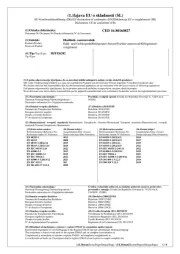
5 September 2025
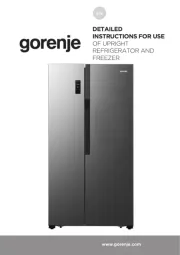
5 September 2025
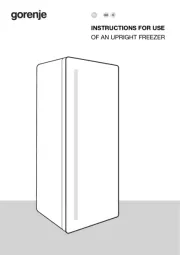
4 September 2025
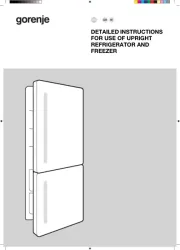
4 September 2025
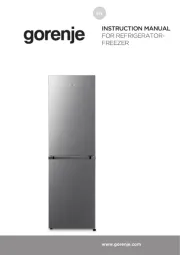
4 September 2025
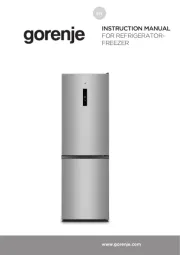
4 September 2025
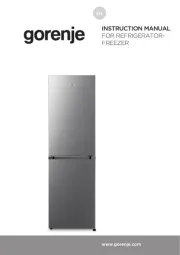
4 September 2025
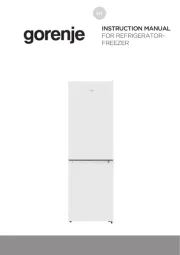
4 September 2025
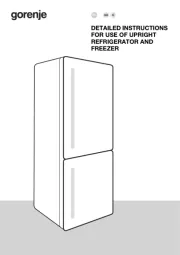
8 Augustus 2025
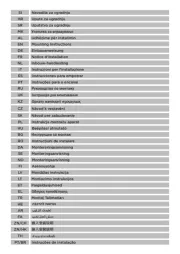
19 April 2025
Handleiding Koelkast
- Privileg
- HomeCraft
- Sevenstars
- Cosmo
- BeefEater
- Newpol
- Fridgemaster
- BlueStar
- Dellware
- Summit
- Emperor's Select
- Hydra Kool
- Bellini
- Techfrost
- Zanussi
Nieuwste handleidingen voor Koelkast
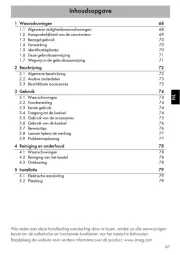
18 September 2025
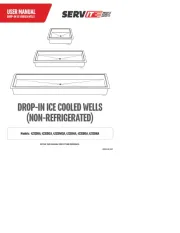
18 September 2025
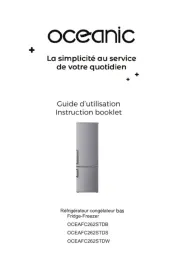
17 September 2025
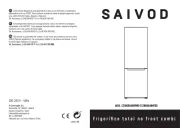
16 September 2025
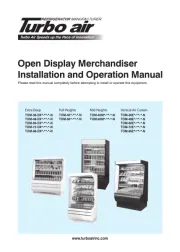
16 September 2025
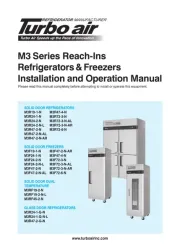
16 September 2025
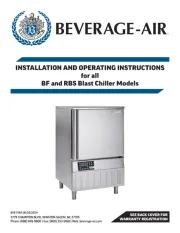
16 September 2025
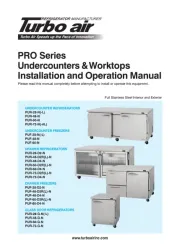
16 September 2025
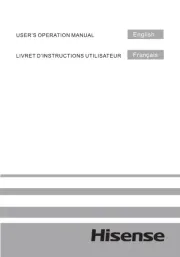
16 September 2025
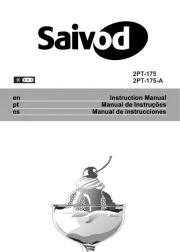
16 September 2025